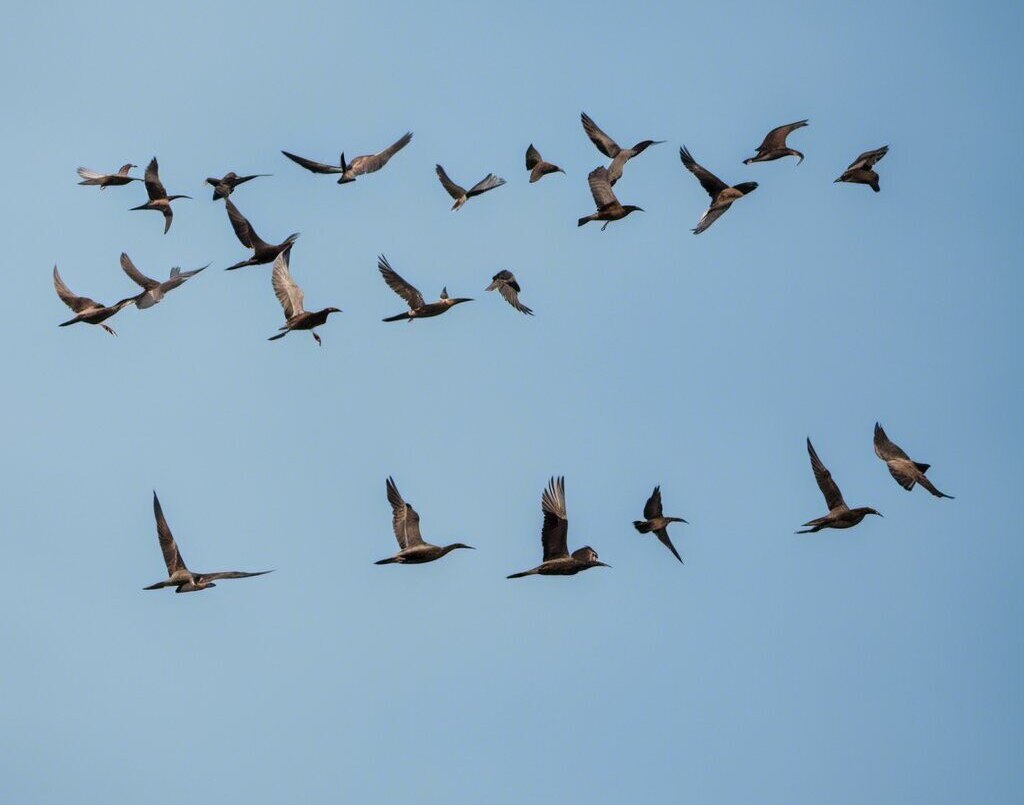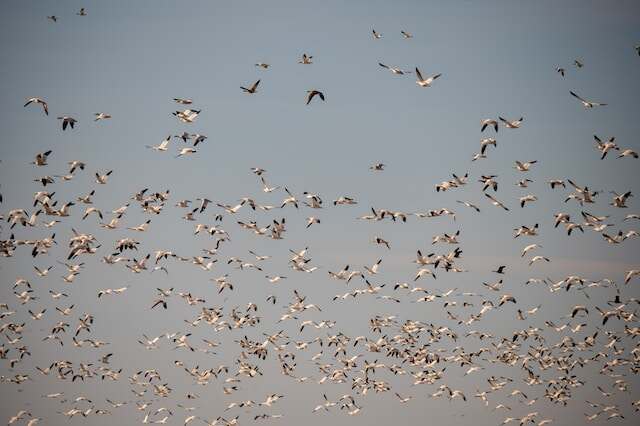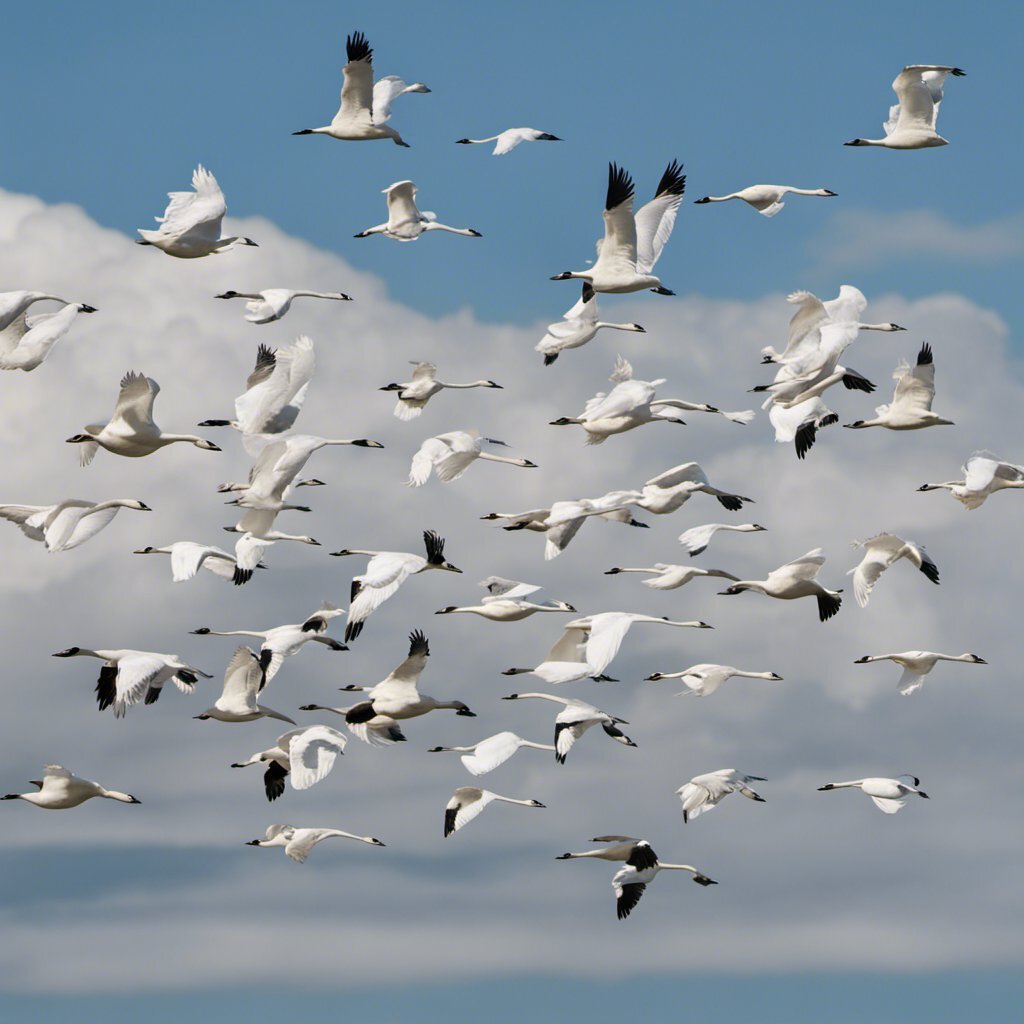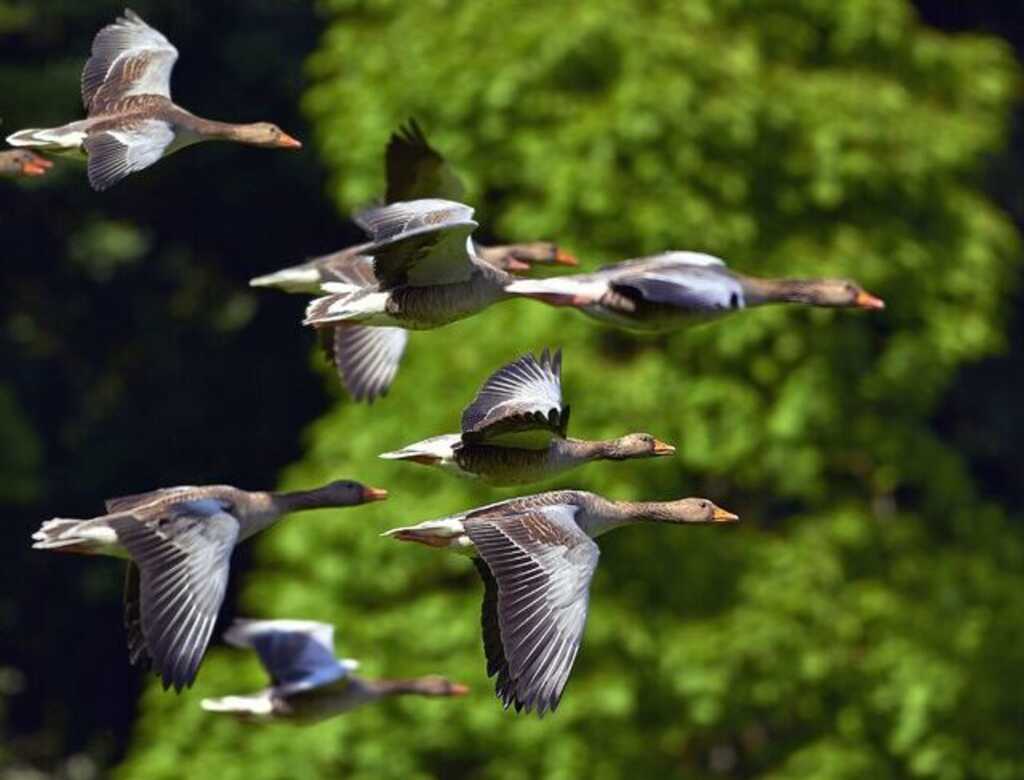Every year, millions of birds embark on incredible journeys across the world, traveling thousands of miles to migrate. Understanding the patterns and timings of bird migration is crucial for bird enthusiasts, environmentalists, and conservationists alike. Knowing what month birds migrate can help you plan birdwatching activities, appreciate the wonder of nature, and contribute to conservation efforts.
In this comprehensive bird migration guide, we will explore the different migration patterns, timings, and hotspots in the United States. We will also discuss the importance of conservation efforts for migratory birds and the threats they face during migration. So, what month do birds migrate? Let’s delve into the fascinating world of bird migration and find out!
Table of Contents
- 1 Key Takeaways
- 2 What Month Do Birds Migrate?
- 3 Understanding Bird Migration Patterns and Timings
- 4 Bird Migration Calendar: Key Months for Bird Migration
- 5 Spring Migration: Arrival of Migratory Birds
- 6 Summer Migration: Breeding Season for Migratory Birds
- 7 Fall Migration: Birds Preparing for Winter
- 8 Winter Migration: Seeking Warmer Climates
- 9 Notable Bird Migration Hotspots in the United States
- 10 Conservation and Concerns for Migratory Birds
- 11 Conclusion
- 12 FAQs: What Month Do Birds Migrate?
- 12.1 What is bird migration?
- 12.2 Why do birds migrate?
- 12.3 How do birds navigate during migration?
- 12.4 How long do birds migrate?
- 12.5 Which months do birds migrate?
- 12.6 Where do birds migrate to?
- 12.7 How far do birds migrate?
- 12.8 Can birds get lost during migration?
- 12.9 How can I observe bird migration?
- 12.10 What can I do to help migratory birds?
- 13 Author
Key Takeaways
- Understanding bird migration patterns and timings is crucial for bird enthusiasts, environmentalists, and conservationists.
- Knowing what month birds migrate can help you plan birdwatching activities and appreciate the wonder of nature.
- Migratory birds face several threats during migration, and conservation efforts are essential for their survival.

What Month Do Birds Migrate?
Most bird species migrate during spring and fall, with the exact timing varying depending on the species and their location. Spring migration typically occurs from February to June, while fall migration occurs from August to November. However, some species may migrate outside of these months or migrate over longer periods of time.
Understanding Bird Migration Patterns and Timings
Bird migration is a natural phenomenon that occurs around the world, as birds move from one region to another in search of food, breeding grounds, and favorable weather conditions. Migration patterns and timings vary depending on the species of bird and their habitats, but generally follow a predictable cycle each year. Understanding these patterns and timings is essential for birdwatchers, conservationists, and anyone interested in the natural world.
Factors Influencing Migration
Migratory birds are influenced by a range of environmental factors, including seasonal changes, food availability, and breeding cycles. As the seasons change and temperatures become cooler, many birds begin to migrate towards warmer regions, where food and nesting opportunities are abundant. Some birds are also influenced by changes in daylight hours, which trigger their migratory instincts.
Migration Periods
Bird migration can be broken down into four main periods: spring, summer, fall, and winter. During these periods, different bird species migrate to different regions, following specific routes and schedules.
| Period | Main Purpose | Common Species |
|---|---|---|
| Spring | Arrival of migratory birds | Warblers, Baltimore Oriole, Sandhill Cranes, and others |
| Summer | Breeding and nesting | Hummingbirds, Swallows, and others |
| Fall | Preparing for winter | Finches, Bald Eagles, and others |
| Winter | Seeking warmer climates | Snow Geese, Sandhill Cranes, and others |
Each period has its own unique characteristics and offers different opportunities for observing migratory birds in action.
Routes and Timing
The routes and timing of migration vary depending on the species of bird and their habitats. Some birds migrate long distances, flying over oceans and continents to reach their destination. Others migrate shorter distances, staying within a specific region or country. The timing of migration is also influenced by weather patterns, with favorable winds and temperatures aiding the birds’ journey.
Overall, understanding bird migration patterns and timings is a fascinating and rewarding pursuit, offering insights into the behavior and movements of these incredible creatures. Whether you are an avid birdwatcher or simply interested in the natural world, bird migration is a topic that is sure to captivate and inspire.

Bird Migration Calendar: Key Months for Bird Migration
Bird migration in the United States is an impressive natural phenomenon that takes place throughout the year. Knowing the key months for bird migration is essential for bird enthusiasts and nature lovers who want to witness the migration of different bird species across the country.
The migration period is strongly linked to seasonal changes, with birds adapting their migratory patterns to take advantage of the conditions available in each region. Below is a list of the key months during which bird migration occurs in different regions of the United States.
| Region | Migration Period |
|---|---|
| West Coast | March-May, August-December |
| Rocky Mountains | April-June, August-October |
| Great Plains | April-June, September-November |
| Midwest | April-June, September-November |
| East Coast | April-June, September-November |
| South | January-April, August-November |
The above table shows the migration periods for different regions within the United States, including the West Coast, Rocky Mountains, Great Plains, Midwest, East Coast, and South. For example, in the Midwest, bird migration typically occurs from April to June and then again from September to November.
It is important to note that the exact timing of bird migration can vary depending on weather patterns, food availability, and other factors. Additionally, different bird species have their own unique migration patterns and timing, with some birds traveling thousands of miles each year to reach their breeding and wintering grounds.
Understanding the migratory patterns of different bird species can help us appreciate the marvel of bird migration and the importance of conserving habitats that are crucial for their survival throughout the year.
Spring Migration: Arrival of Migratory Birds
Spring is a crucial time for migratory birds, as it marks the beginning of their journey back to their breeding grounds in the Northern Hemisphere. This is a period of great activity, as millions of birds undertake their long and arduous migration from their wintering grounds in Central and South America, Mexico, and the Caribbean Islands.
During the spring migration, the United States becomes a crucial stopover for many bird species. The country’s vast network of wetlands, forests, and grasslands act as important refueling stations for these birds, providing them with food and shelter as they make their way north.
Spring Bird Migration Species
Some of the bird species commonly seen during the spring migration period include:
| Bird Species | Migration Timing | Regions Migrated To |
|---|---|---|
| Warblers | Mid-April to Late May | Eastern and Central US |
| Tanagers | Mid-April to Early June | Eastern and Central US |
| Orioles | Mid-April to Early June | Eastern and Central US |
| Hummingbirds | March to September | Western US and Canada |
These species travel long distances, often flying non-stop for many hours or days. Some birds, such as the Arctic Tern, fly up to 25,000 miles each year during their migration, making it the longest migration among all birds.
If you’re lucky enough to witness the spring migration, you’ll be treated to a spectacular display of birdwatching. The sight of flocks of birds flying overhead, singing and calling as they go, is truly a sight to behold.
Summer Migration: Breeding Season for Migratory Birds
During the summer months, many migratory bird species are focused on breeding and nesting activities. The summer is a critical time for these birds, as they reproduce and raise their young to prepare them for the journey back to their wintering grounds.
Some of the most common migratory bird species that breed in the United States during the summer include the American Goldfinch, Eastern Bluebird, and Cedar Waxwing. These birds can be found in a variety of habitats, including forests, fields, and wetlands.
Breeding and Nesting Season Timings
The breeding and nesting season for migratory birds typically peaks during the summer months of June and July. During this time, birds will engage in courtship behaviors and build nests to lay their eggs. The specific timing of these activities can vary depending on the species and the climate in a given region.
Some species, such as the Swainson’s Thrush, may begin breeding as early as April or May, while others, like the Blackpoll Warbler, may not begin until July or August.
It’s important to note that migratory birds are protected under the Migratory Bird Treaty Act, which makes it illegal to disturb their nests or breeding activities.
Migration Routes during Summer
During the summer, some migratory bird species will also engage in short-distance migrations to find suitable breeding habitats. For example, many birds that breed in the Arctic tundra will migrate south to the boreal forest to nest.
Other species, like the Northern Oriole, will migrate from Central and South America to breed in the eastern United States. These birds can be seen in suburban areas where they build their nests in trees and shrubs.
Overall, the summer migration period is a critical time for migratory birds to establish breeding territories, reproduce, and fledge their young. It’s important to be mindful of these activities and support conservation efforts to protect these species and their habitats.

Fall Migration: Birds Preparing for Winter
As the weather starts to cool down, birds begin their journey southward to prepare for the winter months. Fall migration typically occurs from August through November and is a critical time for birds to find suitable habitats and food sources for the winter.
During the fall migration period, birds can travel thousands of miles, often following the same routes they took during the spring migration. Some of the most common species seen during fall migration include warblers, thrushes, and sparrows.
One of the challenges that migratory birds face during the fall migration is finding enough food to fuel their long journeys. As temperatures drop, insects become scarce, forcing birds to switch to alternative food sources such as berries and seeds. It is crucial to preserve natural habitats and food sources for migratory birds to ensure they have the resources they need during this critical time.
Fall Migration: Birds Preparing for Winter
| Bird Species | Time of Migration | Regions Migrated to |
|---|---|---|
| Warblers | August to October | Eastern and Central North America, Central and South America |
| Thrushes | September to November | North America, Central and South America |
| Sparrows | September to November | North America and Central America |
One of the most popular areas for fall birdwatching is Cape May, New Jersey, known for its impressive migration of raptors, songbirds, and shorebirds. Other notable bird migration hotspots during the fall include Point Reyes, California, and Hawk Mountain, Pennsylvania.
Despite the excitement and wonder of bird migration, migratory birds face several threats during their journeys, including habitat loss, collisions with buildings and other structures, and climate change. It is vital to support conservation efforts to protect migratory birds and their habitats.
Winter Migration: Seeking Warmer Climates
During the winter months, many bird species migrate to warmer climates in order to survive the cold. Some birds travel all the way to Central and South America, while others head to southern regions of the United States. The winter migration period typically occurs between November and March, with peak migration months varying by species and region.
One notable species that migrates during the winter months is the Snow Goose, which travels from its northern breeding grounds to the southern United States and Mexico. The American Wigeon is another common winter migrant, spending the colder months in coastal areas of California and the southern United States.
The winter migration can be particularly challenging for birds, as they must navigate long distances and unpredictable weather. Many birds fly nonstop for days or even weeks, using stored fat as a source of energy. This puts them at risk of exhaustion and starvation, especially if they encounter strong headwinds or storms.
To help ensure the safety of migratory birds during the winter months, it is important to protect their habitats and food sources. Wetlands, in particular, are critical for many winter migrants, providing crucial habitat and food for waterfowl and shorebirds.
By understanding the timing and patterns of winter migration, we can appreciate the remarkable journeys that migratory birds make each year and take steps to protect their survival.

Notable Bird Migration Hotspots in the United States
The United States is home to some of the most diverse and spectacular bird migration hotspots in the world. Each year, millions of birds make their way to these locations, creating breathtaking sights for birdwatchers and nature enthusiasts.
Here are some of the notable bird migration hotspots in the United States:
| Location | Highlights |
|---|---|
| Cape May, New Jersey | One of the most popular birdwatching locations in North America, with hundreds of bird species passing through during spring and fall migration. |
| Hawk Mountain, Pennsylvania | A prime location for viewing raptors during fall migration. Over 16 species of raptors, including falcons and eagles, can be seen soaring over the mountain. |
| Point Pelee, Ontario | Located on the southern shore of Lake Erie, this park offers an excellent view of over 360 bird species during spring and fall migration. |
| Bosque del Apache National Wildlife Refuge, New Mexico | A wintering ground for sandhill cranes, snow geese, and other migratory birds. The annual Festival of the Cranes draws thousands of visitors each year. |
| Monterey Bay, California | Home to one of the largest pelican rookeries in the world, with millions of birds passing through during fall migration. |
Other well-known bird migration hotspots in the United States include the Florida Everglades, Texas Gulf Coast, and the Great Lakes region. These sites offer a unique opportunity to witness the beauty and diversity of bird migration in action.
Conservation and Concerns for Migratory Birds
Migratory birds face several threats during their long journey, including habitat loss, climate change, and human activity. The importance of conserving migratory birds cannot be overstated, as they play a significant role in maintaining ecological balance, pollinating plants, and controlling pests.
Habitat loss is a significant issue for migratory birds, as urbanization and agriculture continue to encroach on their natural habitats. Deforestation, wetland drainage, and pollution also contribute to the loss of critical stopover and nesting sites.
Climate change is another major concern for migratory birds, as it affects their breeding and migration patterns. Changes in temperature and precipitation alter the timing of breeding and food availability, which affects the survival of migratory bird populations.
Human activity can also pose a significant threat to migratory birds, such as collisions with buildings, power lines, and wind turbines. Hunting, poaching, and illegal trade of migratory birds are other concerns that need to be addressed.
To address these threats, several conservation efforts are underway. Many organizations are working to protect critical habitats, create stopover and breeding sites, and reduce the risk of collisions during migration.
International agreements such as the Migratory Bird Treaty Act and the Convention on the Conservation of Migratory Species of Wild Animals (CMS) aim to protect migratory bird populations and their habitats. These agreements provide a framework for international cooperation on conservation efforts.
As individuals, we can also take steps to contribute to the conservation of migratory birds. By supporting conservation organizations, reducing our carbon footprint, and avoiding activities that harm migratory birds, such as leaving outdoor lights on during migration season, we can all play a role in protecting these incredible species.
Conclusion
Understanding bird migration patterns and the months during which birds migrate is essential for anyone interested in birdwatching or conservation. By knowing when and where to expect migratory birds, we can better appreciate their beauty and diversity, and take measures to protect their habitats and ensure their safe journey.
It is important to remember that migratory birds face numerous threats during their long journey, including habitat loss, climate change, and human interference. Conservation efforts are crucial to preserving these magnificent creatures for future generations to enjoy.
Let us all do our part by appreciating and protecting migratory birds, and ensuring their continued survival and well-being. Together, we can make a difference.
FAQs: What Month Do Birds Migrate?
What is bird migration?
Bird migration is the seasonal movement of birds from one place to another. Birds migrate to find better food sources, suitable breeding grounds, and favorable climates.
Why do birds migrate?
Birds migrate to take advantage of resources that vary seasonally. They follow food sources, avoid harsh weather conditions, and seek suitable habitats for breeding and raising their young.
Birds use a combination of cues to navigate during migration, including celestial navigation (using the sun, stars, and magnetic fields), visual landmarks, and their innate sense of direction.
How long do birds migrate?
The duration of bird migration varies depending on the species and the distance they need to cover. Some birds migrate for a few weeks, while others undertake journeys that can span several months.
Which months do birds migrate?
The timing of bird migration varies depending on the species and their breeding and feeding requirements. Generally, birds migrate during the spring and fall seasons, with some species also migrating during the summer and winter.
Where do birds migrate to?
Birds migrate to various destinations depending on their species. Some birds migrate from one continent to another, while others travel shorter distances within their geographical range.
How far do birds migrate?
The distance birds migrate varies greatly. Some species travel only a few hundred miles, while others undertake remarkable journeys of thousands of miles.
Can birds get lost during migration?
Birds have evolved remarkable navigational abilities, but occasionally, they can get disoriented or face challenges that lead to temporary confusion. However, they usually find their way back on track.
How can I observe bird migration?
To observe bird migration, you can visit birdwatching hotspots during the relevant migration seasons, join organized birdwatching tours, or simply keep an eye out for migratory species in your local area.
What can I do to help migratory birds?
You can help migratory birds by supporting conservation efforts, such as creating bird-friendly habitats in your backyard, reducing pesticide use, and advocating for protected areas and policies that safeguard their migration routes.



